The Temple of Jupiter, the propylaeum, and a sign of the times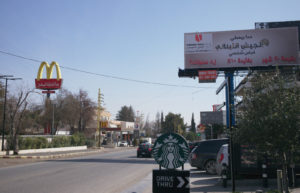 …Baal-bek…
…Baal-bek…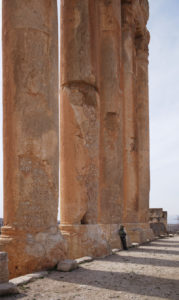
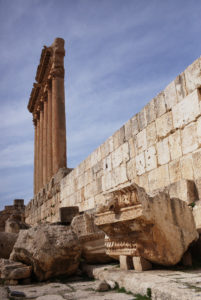
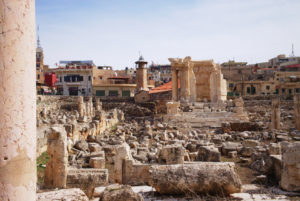
The Temple of Jupiter, the propylaeum, and a sign of the times …Baal-bek…
…Baal-bek…


I looked out my window and witnessed the dawn illuminating the rocks, the sea, the white and tan buildings of the little seaside town I call home. I live in a world of light, and always have. The light pours into my eyes, through my camera lens, bounces off the walls in my small flat.
I was raised in a home of education and knowledge. I read, explored and created from an early age. In some ways I have been ‘home-schooled’ in the art of learning. I know how to satisfy my curiosity. Learning was the cure-all for most blues, for it was there that I was able to rise out of whatever poverty (social, physical, etc…) I felt was governing my life. There were times in my life when all I had were my books, some paper and a pen. I did better than just survive. Even at my worst, I saw much of the world for what it could be–a world of light and possibilities.
This is not the truth for many, I know. I am not naive to the facts of real poverty and starvation. It is all around me. It is here, in this town. It is real. So how does this change? Through education, perhaps…but what kind?
As I write this, the starving and lost listen to the rhetoric of hate and violence, nodding their heads as their yearning minds absorb bitter venom. We know where this leads. The history books and daily newspapers are full of it. The real tragedy is that those wielding the knives and guns are not the real demons. They have been lied to, deceived, conned. They are pawns, broken wind-up toys set in motion by others, those higher up the food chain who have been educated, have money, and cultural influence. The tin souls of the desperate are twisted and we all suffer.
Is there a way to cure this without leaving our own darkness? As a frightened animal, my first internal reaction is just that–a reaction. It is as violent and angry as the news I read every morning. The initial solution is terrible. I realize that this is the reaction the toy-winders want. Next comes something more rational, but that holds a cold, black and silver aura, historically vile…
The truth is that I have no idea what to do. I have no quick fix, no philosophy with which to stop the clicking mechanisms. I cannot un-wind the broken toys. I am afraid that no one can.
I will not end on this bleak note. I began with the light, and so I will seek the light again. I look out the window of the small cafe where I type and I see the cyan sky, green hills surrounding the quiet bay, a wine-dark sea. I have the whole day ahead of me and will use it to create, engage peacefully and show gratitude for these gifts. Maybe that is the way to stop the toy-winders.
Clear-minded-clear thinking-clear speaking-smiling face. Keep it light.
–JDCM
–A friend recently presented me with a small collection of C. P. Cavafy’s poetry. I am familiar with his work, but not so much with those collected in this small, beautiful anthology.
–Today we lay on the beach on Andiparos. Waves lapped at the rocks; birds sang in the dry, hot September air; we swam, ate lunch. We read Cavafy to each other. I was particularly moved by his poem ‘Ithaca’, written in 1911. It is of leaving and arriving, the maturation of the soul and that this is all we may wish for as our journeys continue.
–We all come to places, places we have read about in books, or perhaps overheard–they are awed, exotic hushed whipsers. We all leave these places, hopefully taking with us what we have been given, what we can carry, gifts from Phoenecians…
Ithaca
As you set out bound for Ithaca hope that the journey is a long one, full of adventures, full of learning. Of the Laestrygonians and Cyclopes, of wrathful Poseidon have no fear, you’ll never meet suchlike on your journey, if your thoughts remain lofty, if noble sentiment grips your body and spirit. You’ll never encounter raging Poseidon, Laestrygonians and Cyclopes, unless you bear them in your soul, unless your soul sets them before you. Hope that the journey is a long one. That the summer morns be many when with what delight, what joy you enter harbours hitherto unseen; that you stop at Phoenecian markets, and acquire fine merchandise, nacre and coral, amber and ebony, and all kinds of heady perfumes, as many heady perfumes as you can; that you visit many Egyptian cities, to learn and learn from the erudite. Always keep Ithaca in mind. To arrive there is your destination. But in no way rush the voyage. Better for it to last many years; and for you to berth on the isle an old man, rich with all you gained on the journey, without expecting Ithaca to give you riches. Ithaca gave you the wonderful voyage. Without her you would not have set out on your way. Yet she has nothing more to give you. And though you may find her wanting, Ithaca has not deceived you. Wise as you’ve become, with so much experience, already you’ll have understood what these Ithacas mean. C.P. Cavafy, 1911I will continue reading Cavafy. I fall into his words, as one falls into a conversation.
–JDCM
I am back on Paros, grateful for the short time away, grateful to be home. I am dropping off my laptop at a Mac repair shop in Naoussa in about an hour, so I’ll update now and be off-line for a few days while they fix my RAM/overheating issues. Get some other stuff done… Here are some thoughts gleaned from the notebook I kept while away from my keyboard.
–On Iraklia, be sure to eat at ‘Pefkos’. A nice, small family-run taverna. I had excellent goat there and fried zucchini. Ate there twice.
–On the day I left Iraklia, I wrote “Fisherman repair nets. There is music on the radio. My donkey and I wait for the boat to Naxos.”
–A kamaki is a traditional three-pronged spear used to hunt fish. It is also the term used for the people (kamakia) who wait for you to disembark from a boat. They try to lure you in to stay at their hotel, studio or apartment. I wrote “The life of a kamaki is no life at all.”
–A poem…Sikinos slips by/stone dragon in/a shining sea./From the stern/I gaze up/its scaly flank/searching for Episkopi/the worn dome/the Apollonian columns.
–“I’ve seen Sikinos burning, from miles away, on another island, years ago. From Andiparos the blaze measured 5 mm between my fingertips. A year later I searched the rocky terraces and found no sign of the inferno. Perhaps it was dragon spit.”
–I was able to finish ‘Ulysses’ while on holiday. “As the Aqua Jewel slid into the harbor of Sifnos, Molly Bloom exclaimed “…yes I said yesI will yes.”
–A Gypsy woman wearing an electric blue t-shirt. Written in large, bold black letters is “variegated moss green.”
–“The lights of Paros shine faintly off the starboard bow. I can see Paros from where I am.”
–JDCM
October 30, 2013
–The weather is still hot during the day but the mornings are cool so I wear a sweatshirt when I leave the hotel. By 10:00 I am in my t-shirt. I have driven through hundreds of orange groves in two days.
–The ruins in Ancient Corinth are vast and the typical jumble. The Temple of the Corinthian Apollo is Doric. Lots of Roman stone. St. Paul was here.
–Akro Korinthos, 3 km up the mountain from the site, is massive. I have walked the walls. Easily as large as the outer walls of Dubrovnik…5km if I remember correctly. Walls built on walls…Mycenean, Byzantine, Ottoman and Venetian. Everyone knew a good site for a fort when they conquered it. Impregnable and all but hewn from the living stone. Few people there today. Some workman digging a new drainage ditch. They are stone-faced when I say “kali mera.”
–I have seen more Golden Dawn graffiti here than anywhere in Greece. Lots of spray-painted Greek meanders…this is a ubiquitous symbol. It is on my bathmat in the hotel where I sleep. It’s on tourist swag. Now it means something else, something terrible. They have taken a design everyone knows as good and twisted it with their broken thinking.
–Nafplio is not Paros. The mainland is not the Kyklades. There is a roughness here, less open than the Greece I know. Fewer smiles. Gruff.
–Epidaurus tomorrow and Schliemann’s second site at Tyrins. My last full day here and I want to make the most of my little car. I might brave the winding mountain road to Ermioni for lunch after visiting the theater.
October 31, 2013
–Epidaurus, Tyrins…quiet but there are still buses and tourists. Mostly older groups and I seem to be shadowing a school group of American kids. They were at my hotel too. Quiet as mice. A nice thing to experience. Corinth yesterday and the theater today. Also the Nafplio museum…
–The winding road to Epidaurus and grove after grove of olives and oranges.
–A group of Russians at the theater…testing the acoustics with pebbles. Wonderful. Tyrins on the way back to Nafplio. Not much to see but an observation: the technique used to build the large Mycenean walls is the same as the wall building I have seen all over the Kyklades. No walls here, nothing crisscrossing the landscape. The Mycenean civilization was large.
–Blue domes are now terra-cotta tiles. I had forgotten that about the Peloponnese.
–When I was a boy, about 5 or 6, my grandmother gave me gifts from her time in Greece: a small model of a Greek house with a windmill, a komboloi, an Evzone figurine. She planted this seed. She was here.
–I am still enjoying my short DoF exercises. The stones, greenery and blue skies are perfect for this. Shooting at f/1.8 to f/4 only…
JDCM
It is the autumn mid-term break and I am off-island. I am feeling a bit of culture shock. There are so many people here on the mainland. So many cars…
I arrived here on Sunday, the day before ‘Ohi Day’. It was also the weekend of Agios Dimitrios, a saint of some popularity here in Greece. Everyone with a connection to the saint for their name day celebrates. It was a long weekend. Weekenders from Athens and Corinth mobbed the narrow streets. I had left the quiet calm of Paros and landed here. I felt like hiding. My meal that night was good: Gigantes, fried zucchini, lamb chops and the waiter tried to stiff me 10 Euros until I confronted him. He was so very apologetic. Kleftis!
Ohi Day was a grand affair and just before the big parade, I decided to not stick around. I took a long walk around the massif on which the Palamidi Fortress sits and then on my way back climbed the 900+ stairs to the top of this Venetian citadel. The view was lovely, but the tourists were there too. There was an American school group, and I observed how they behaved in a foreign country. Like bumpkins, I tell you, bumpkins. The Aegean Center students would never act as they did. I left the castle and went back to the town, searched out a car rental agency and rented a car for the next day (today). I ate a wonderful meal at a small taverna off the main drag and had some of the best skordalia (garlic paste) I have ever had. Superb gavros, too. No billing issues last night. I might go back there tonight.
Today I drove my little silver Hyundai north to the Mycenean ruins at Mykine. This is the spot where Heinrich Schliemann found all of the gold and proclaimed (incorrectly), “I have seen the face of Agamemnon!” Still, an impressive site and worth the trip. When I left I headed to Nemea and marveled at the ruins of the Temple of the Nemean Zeus. This was one of the centers for the Panhellenic games beginning in the 5th century BCE. Superb.
The clock was edging into the mid afternoon and I decided to call it quits for the day. I headed back to Nafplio. 15 minutes later found me at the ruins of the Temple of Argive Hera, an enormous jumble of stone and column sections of what must have been an imposing structure overlooking the wide valley. Like Mykine, the sea was visible and I imagined in its heyday it gleamed atop the hill from which I viewed the olive groves and vineyards stretching out before me.
I arrived back in Nafplio, parked my car and took a well-deserved siesta in my hotel room. Tomorrow is another big day. I will head a bit farther north and see the imposing Akro Korinthos fortress and Ancient Corinth. Thursday I return to Epidaurus after over 7 years.
The town has quieted somewhat, but the cafes still hum. I am still in Greece, but away from the island, Paroikia and the Aegean Center. This is good. I need time to let go, reflect and otherwise contemplate my place in the Universe and what that means. These imposing structures, their tons of crumbled stone and absent civilizations are a humble reminder of my abilities.
RIP Lou. Your dark candle burned so brightly.
I arrived here yesterday, 15 June. I checked into the Hotel Porto Sikinos (charming and comfortable) and knew that what I needed was a brisk walk and then a leap into the sea. So I did that. Nothing too strenuous or out of control. Then I cleaned up, i.e. took a shower, and rode the bus up the chasm that separates Alopronia (the port) from the Chora. It is a 5 km drive up the winding road. I was told there was a decent restaurant there. I ordered saganaki tiri, fried potatoes, fried eggplant and lamb chops (paidakia). It was pretty good but I know a lamb shoulder chop when I see it. “Paidakia”, my ass. OK. That’s what I give the restaurant–an ‘OK’. After a long day of travel I slept like a log and woke up around 8:30. The breakfast at the hotel was quite good, and plentiful. I skipped the bready things and ate the yogurt, boiled egg, both honeys, coffee and juice. Today I was going to hike to Episkopi! Yes, I did eventually get there, but it was adventure I am not eager to repeat. My fault, by the way. This is the rundown…
I chose a well-traveled path out of Alopronia up the Chora. No real worries, but I strayed off at one point and had to bushwhack through the thorny underbrush and eventually backtrack 500m downhill to where I joined the track again. I arrived in the Chora an hour later sopping with sweat. I refueled with some orange soda and bought some more water at a café. Good thing I did. I would need it.
There are two ways to reach Episkopi. The first is along the paved road that leads directly to the place. The other is a donkey track just off the paved road that also leads right to the ancient temple. Of course I chose the donkey track, or so I thought. What I chose was a different donkey track that mirrored, for a while at least, the one I currently trod. So I hiked along, enjoying the view of the archipelago (Folegandros, Milos, Kimolos, Sifnos, Andiparos, Paros and Naxos). Beautiful. Stunning. Then the path began to narrow. Hmmm…I continued since it was not a problem. Yet. Then as I was happily sauntering along I came around a corner and there was the fence. Shit. The path continued on the other side…I could see it. Then I realized my mistake. I should have gone back, it would have been easy enough, but no. I decided to go up and around the fence, or so I hoped. Long story short…
This led to a three-hour uphill, across ancient terraces, through thorns that would pierce leather (and my skin) trudge. I was able to find short stretches of paths, more goat tracks than anything else. Then they would disappear into a thorny mass. At this point I was aware of two things: I had not seen any goat droppings in a while and the foliage was becoming more and more wild. The fig trees were small and dried out, crackling under my grip. The olive groves were overgrown and unkempt, the trees stunted from the wind and unpruned. My reading of Homer told me that I was far from civilization. Oh yes…water…I had 1 full liter left. I was becoming disheartened, but what choice did I have but to keep pushing up and, I hoped, reach the road which I knew was there, yet I could not see? My excellent topo map gave me a pretty good idea where I was. So I scrambled and clawed my way through the thorns as they tore my skin. I climbed ancient terrace walls, carefully planting my feet and hands. Should one collapse, I was finished. No joke. I was getting worried. I began to remember what I had packed: Water, two cameras, my Swiss Army knife, two sarong for padding for the cameras. They were brightly colored. I could wave them to get someone’s attention in the case of an emergency, but there was no one around. I also had both my mobile phones. I ran several conversations through my head…I prayed a lot. Asked for all kinds of help: just 20 more meters; just over this terrace; just a little more. I was loath to drink my water. Only a half liter remained.
At one point the underbrush thinned slightly and I saw a real path. Stony, uneven, but going up and without many thorn bushes. Thank you, thank you…whoever. I moved up. I clambered over a small pile of stones and then I saw it: the guard rail. The road. The blessed road. Only 50 meters now…30…20…10 and I was up and out standing on glorious tarmac. I have never been so happy to see pavement. I looked to my left and there was Episkopi. I made it. The breeze was blowing. I began to feel chills, a sign of many things, almost all bad. I walked the 100 meters to the glorious and historical building, seeking shade. I walked along the side and plopped down on a small bench out of the sun. I dropped my pack, took off my shoes and socks, hung my soaked t-shirt on a wall to dry and took some deep breaths. Grateful, I leaned against the cool stone of the former-temple-of-Apollo-turned-Byzantine-church and blissfully felt my core temperature drop. I took out my watch. It was 2:20. Now to get back to the Chora and the port. There is a large cistern at the site and I refilled my water bottles but I needed potassium, salt and more water. Juices. Cold juices. And bananas. That’s what wanted. But first some pictures.
I made it back, dear readers, yes, I made it back. I have just counted the distance and I probably hiked a little over 12 km, the hard way. Tomorrow I go to the beach and relax. I will read my book, swim and let the antiseptic quality of the Aegean cure my lacerated limbs. Then I will nap. Tuesday I head to Folegandros. I will be there for 5 days. I am a lucky boy, in many ways.
JDCM
There was a time before my time, before the time of my sisters, my parents, my friends…
For some reason this phrase popped in to my head today. For the past few days I have been helping a friend and mentor and her husband move house. It has been an emotional and difficult time for them and I have been honored and humbled to help sort through decades of their life here on Paros, and earlier. We have been separating the wheat from the chaff–a difficult process.
Much of what they wished to save has been in the form of photographs, or more precisely, photographic archives. That is the only way to think of it. Negatives of all sizes, black and white, color, contact sheets, prints. Their time here has been documented and preserved in hard-copy. There was little digital imagery. As I worked I felt something meaningful, truly palpable, while holding a negative up to the light, perusing a contact sheet or carrying an artist’s portfolio bursting with prints. Compared to the lightweight, back-lit digital medium that takes up little space and weighs all but nothing, these items, this archive, made sense to me. Maybe those of us in the digital age have become so accustomed to the ease with which we view, and then delete, images, or page through them via myriad viewing software programs that we are beginning to forget the importance of this process.
My point is that memory, that elusive, ever-changing spirit we carry in our soul, is something that should have weight. It should take up space in our homes. We should, every once in a while, take a photo album or box of negatives off the shelf, dust them off and hold them up to the light of day. As we gaze, we smile. We remember friends long gone or vistas experienced in a way that we cannot when looking at an LED screen or something of that nature. We smile, or we cry. We tell a friend, “Look…here…this is when we…” and then hand them the fragile transparency or piece of paper. We pass on 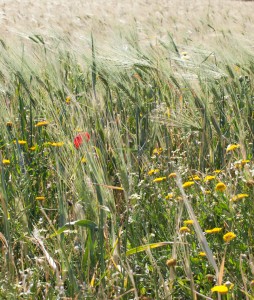 that experience.
that experience.
We are all repositories of the past. This brings me back to the idea that there was once a time before my time, before the time of those who came before me. I have books as proof, books I can hold. I have folders full of negatives, unprinted. I am accumulating weight in the form of artists portfolios stuffed with prints. I have held them up to the light of day. I say, “Look…here…This is when I…
Happy Easter!
JDCM
In the past few weeks I have begun printing some of the images I made last summer during my island hopping following the spring 2012 session here at the Aegean Center. For the most part, they are photographs of the stone walls that criss-cross the Kyklades landscapes like so many topographical scratches: property lines, terrace farming, some ancient, some new. The proofs are working out fine, but I have begun to grow uneasy. I am still coming to terms with the idea of ‘art’ and my photography. True, I can compose within the format, be it square or rectangular, but am I an artist or am I simply a skilled documentarian? The same applies to the portrait pieces I am photographing with my 4×5 and then using the scanner to render them into a digital format. This is not my discussion alone, but one that has been on the table since photography began. Is a photograph art?
I was told tonight by someone at a cafe that if a photograph ‘moves him’, creates an emotional response, then it is art. I’ll buy that. So what kind of emotional response is my ‘wall photography’ generating? Nostalgia, loneliness, sadness…The scenes are desolate, full of ruins and, in some cases, the detritus of man. Overturned ore carts, rotting and rusting in the harsh Aegean climate; volcanic chunks of stone piled two meters high to create the snake-like patterns running over hills one sees from the aft deck of the Blue Star ferry as they sail from Pireaus south. There are no people in these images. There are only the bones of ghosts.
The portrait work, on the other hand, is completely different. I am trying to capture the essence of the person, or people, in their own environment. Some are in studios, others at home. In each case I have been able to catch a glimpse of something that reaffirms the great possibility of life. The terrace farms may collapse due to misuse over the centuries, but these people will live on through the images I am creating. I am creating. I can create. Perhaps that is as close a definition for ‘art’ as I will ever get. Art is creation, a recognition of beauty and grace despite the ravages of time. I can be a creator of something. I can document with a deft hand, be mindful of the alchemical processes and thus reveal something to the world that I find beautiful. There is a lazy part of me that wants this feeling to go away. The realist in me understands that questioning is essential. Without doubt and self-examination, how can I possibly progress?
JDCM
The mid-term break here at the Aegean Center on Paros has drawn to a close. The first day of the rest of the session begins tomorrow with our Monday morning meeting, and back to work we go. As usual, most of the students went traveling, as they should, and many came back in time to knuckle down and get back into the swing of things before the final push begins: 31 days until the student exhibit and I, for one, have not done enough. Granted, I have been shooting a lot of film and developing it, but my digital projects have slowed and I haven’t been printing as much as I should. I am not worried, however, as I know what and how much I can do and how to accomplish these tasks, but the newer students are just now acclimating to the idea that they are here to work as well as explore. First the push, then the crunch and before anyone knows it, it is time to say ‘farewell’ to Paros, unless they are lucky enough to return in the spring, a session that breathes at a different rate then the fall.
As I write this dispatch from Pebble’s Jazz Bar, overlooking the quiet bay of Paroikia, in America the election for the President slouches towards the the doorsteps of millions, like a wary and red-eyed dog begging for greasy scraps. On Tuesday evening the tally will reveal the overall tenor for the next four years of that country’s leadership and how this beast will be fed. Of course, this election will effect the whole world. If Obama wins, I hope he will have a chance to do more than just clean up his predecessor’s terrible messes. If Romney is chosen to succeed, I fear the world will see what kind of mess can be created by a man with a parochial world view, a medieval stance on civil rights, freedom of speech and a religious background that I, for one, must call cultish at best. I imagine the worst. For a good idea of what this could mean, please feel free to read ‘The Handmaid’s Tale’ by Margaret Atwood. To think that a military theocracy is impossible for the United States in this age is to bury your head in the sand.
The days have been warm and sunny. There has been a shift in the breeze, from south to north, resulting in clearer skies and cooler nights. I am hoping for more rain this week. As the temperature slowly drops this becomes more likely, but the weather report doesn’t list this as a possibility. More good news along with the weather is that the water in the darkroom has dropped to a lovely 21C. This makes my life easier: small mercies for a possible bleak future. I hope Yeats is wrong but poets seldom are.
JDCM
